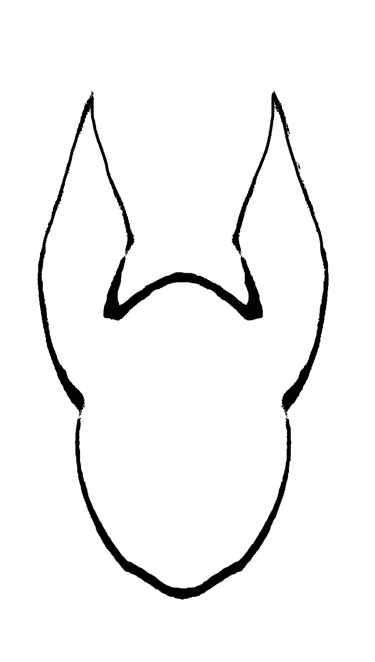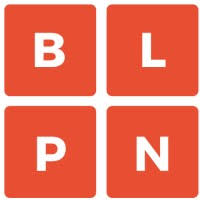Executive Summary
In today's rapidly evolving startup landscape, intellectual property (IP) represents one of the most valuable assets a company can possess. Yet, many entrepreneurs and innovators fall victim to "idea vampires" – individuals or entities that appropriate, exploit, or steal intellectual property without authorization. This white paper provides a comprehensive framework for understanding, identifying, and protecting against IP theft in the startup arena, offering practical strategies for safeguarding innovation while fostering collaborative business relationships.
Table of Contents
Introduction: The IP Landscape in Startup Culture
Understanding Intellectual Property: Types and Vulnerabilities
The Anatomy of Idea Theft: Common Scenarios and Red Flags
Legal Frameworks for IP Protection
Preventive Measures and Best Practices
Building an IP-Aware Culture
Response Strategies When IP Theft Occurs
Conclusion and Recommendations
1. Introduction: The IP Landscape in Startup Culture
The startup ecosystem thrives on innovation, collaboration, and rapid iteration. However, this open environment creates unique vulnerabilities for intellectual property theft. Unlike established corporations with robust legal departments and IP portfolios, startups often operate with limited resources and may lack comprehensive IP protection strategies.
The concept of "idea vampires" – entities that systematically extract, appropriate, or exploit others' intellectual property – has become increasingly relevant in modern business discourse. These actors may include competitors, employees, advisors, investors, or even service providers who gain access to proprietary information and subsequently use it without authorization.
The Stakes Are High
For startups, IP theft can be catastrophic. Unlike established companies that can absorb the impact of IP loss, startups often depend entirely on their innovative edge. A single stolen idea or proprietary process can eliminate competitive advantage, reduce valuation, and in extreme cases, lead to business failure.
2. Understanding Intellectual Property: Types and Vulnerabilities
2.1 Categories of Intellectual Property
Patents
Utility patents protect inventions and discoveries
Design patents protect ornamental designs
Vulnerability: Long application processes leave innovations unprotected
Trademarks
Protect brand names, logos, and distinctive marks
Vulnerability: Unregistered marks have limited protection
Copyrights
Protect original works of authorship
Vulnerability: Automatic protection but enforcement challenges
Trade Secrets
Protect confidential business information
Vulnerability: Most susceptible to theft and misappropriation
Know-How and Proprietary Processes
Includes methodologies, customer lists, and business strategies
Vulnerability: Difficult to protect without proper documentation
2.2 Startup-Specific Vulnerabilities
Startups face unique IP challenges:
Resource Constraints: Limited budgets for comprehensive IP protection
Rapid Scaling: Fast growth can outpace IP protection measures
Open Innovation Culture: Emphasis on collaboration may compromise confidentiality
Employee Mobility: High turnover rates increase knowledge transfer risks
Investor Scrutiny: Due diligence processes expose sensitive information
3. The Anatomy of Idea Theft: Common Scenarios and Red Flags
3.1 Common Theft Scenarios
The Pitch Meeting Predator
Scenario: Ideas stolen during investor pitches or partnership discussions
Red Flag: Unusual interest in technical details without clear business justification
The Departing Employee
Scenario: Key employees leave and start competing ventures
Red Flag: Employees accessing unusual amounts of data before departure
The Advisor Appropriator
Scenario: Advisors or consultants repurpose client innovations
Red Flag: Advisors with competing interests or unclear conflict policies
The Vendor Vulture
Scenario: Service providers or suppliers exploit the client's IP
Red Flag: Vendors requesting excessive access to proprietary systems
The Network Nibbler
Scenario: Industry connections gradually extract and compile information
Red Flag: Persistent questioning about proprietary processes at networking events
3.2 Digital Age Vulnerabilities
Modern startups face additional digital threats:
Cyber Espionage: Hacking and digital infiltration
Social Engineering: Manipulation of employees to reveal sensitive information
Cloud Security Breaches: Unauthorized access to cloud-stored IP
Reverse Engineering: Analysis of products to discover proprietary methods
4. Legal Frameworks for IP Protection
4.1 Foundational Legal Instruments
Non-Disclosure Agreements (NDAs)
Essential for protecting confidential information
Must be comprehensive and enforceable
Should be executed before any sensitive discussions
Non-Compete Agreements
Restrict employees from joining competitors
Enforceability varies by jurisdiction
Must be reasonable in scope and duration
Work-for-Hire Agreements
Ensure company ownership of employee-created IP
Critical for startups with creative or technical teams
Should cover all forms of intellectual property
Licensing Agreements
Control how others use your IP
Can generate revenue while maintaining ownership
Must clearly define usage rights and restrictions
4.2 Regulatory Considerations
International IP Protection
Madrid Protocol for international trademark registration
Patent Cooperation Treaty (PCT) for international patents
Trade secret protection varies significantly by jurisdiction
Industry-Specific Regulations
Healthcare: HIPAA and FDA regulations
Technology: Software licensing and data protection laws
Financial Services: SEC regulations and fiduciary duties
5. Preventive Measures and Best Practices
5.1 Organizational Strategies
Implement IP Governance
Establish clear IP policies and procedures
Designate IP responsibility within the organization
Regular IP audits and assessments
Create Information Hierarchies
Classify information by sensitivity level
Implement need-to-know access controls
Document information handling procedures
Establish Secure Communication Protocols
Use encrypted communication channels
Implement secure file sharing systems
Train employees on communication security
5.2 Technical Safeguards
Digital Security Measures
Multi-factor authentication for all systems
Regular security audits and penetration testing
Employee cybersecurity training programs
Physical Security
Secure storage for sensitive documents
Access controls for facilities and equipment
Visitor management and escort protocols
Documentation and Record-Keeping
Maintain detailed records of IP development
Document all IP-related agreements and transactions
Preserve evidence of IP creation and ownership
5.3 Relationship Management
Vendor and Partner Screening
Conduct thorough due diligence on partners
Verify IP policies and security measures
Establish clear IP ownership terms in contracts
Employee Onboarding and Offboarding
Comprehensive IP training for new hires
Clear IP assignment agreements
Structured offboarding processes with IP return requirements
Investor Relations
Selective information sharing during due diligence
Clear data room policies and access controls
Post-investment IP monitoring and protection
6. Building an IP-Aware Culture
6.1 Leadership Commitment
Creating an IP-aware culture requires commitment from the top. Leadership must:
Demonstrate the value of IP protection through actions and resource allocation
Communicate IP policies clearly and consistently
Lead by example in IP protection practices
6.2 Employee Education and Training
Comprehensive IP Training Programs
Regular workshops on IP identification and protection
Scenario-based training for common IP threats
Updates on emerging IP risks and protection methods
Clear Communication Channels
Establish reporting mechanisms for IP concerns
Create accessible resources for IP questions
Regular updates on IP policies and procedures
6.3 Incentive Alignment
IP Innovation Rewards
Recognition programs for IP creation and protection
Financial incentives for patent applications and IP development
Career advancement opportunities tied to IP contributions
7. Response Strategies When IP Theft Occurs
7.1 Immediate Response Protocol
Assessment and Documentation
Quickly assess the scope and nature of the theft
Document all evidence of IP misappropriation
Preserve electronic evidence and communications
Legal Consultation
Engage IP counsel immediately
Evaluate legal options and potential remedies
Assess strength of IP protection and enforcement options
Stakeholder Communication
Notify relevant internal stakeholders
Communicate with affected partners or customers
Manage public relations and reputation concerns
7.2 Enforcement Options
Cease and Desist Letters
Often the first step in IP enforcement
Cost-effective method to assert IP rights
May resolve disputes without litigation
Litigation
Federal court proceedings for patent and copyright infringement
State court actions for trade secret theft
International litigation for cross-border IP theft
Alternative Dispute Resolution
Arbitration for contractual IP disputes
Mediation for relationship-preserving resolutions
Industry-specific dispute resolution mechanisms
7.3 Recovery and Prevention
Damage Assessment and Recovery
Quantify financial losses from IP theft
Pursue monetary damages and injunctive relief
Implement enhanced security measures
Lessons Learned Integration
Analyze how the theft occurred
Update IP protection policies and procedures
Enhance training and awareness programs
8. Conclusion and Recommendations
8.1 Key Takeaways
Protecting intellectual property in the startup environment requires a multi-faceted approach combining legal, technical, and organizational measures. The cost of IP protection is invariably lower than the cost of IP theft, making proactive protection essential for startup success.
8.2 Strategic Recommendations
For Early-Stage Startups:
Implement basic IP protection measures from day one
Prioritize trade secret protection for core innovations
Establish clear IP ownership and confidentiality agreements
Create an IP-aware culture through education and training
For Growth-Stage Startups:
Develop comprehensive IP portfolios through patents and trademarks
Implement robust technical security measures
Establish formal IP governance and management processes
Regularly audit and update IP protection strategies
For All Startups:
Treat IP protection as a business priority, not just a legal requirement
Balance openness and collaboration with appropriate confidentiality measures
Invest in ongoing IP education and awareness programs
Develop clear response protocols for IP theft incidents
8.3 The Path Forward
The startup ecosystem will continue to evolve, bringing new opportunities and challenges for IP protection. Success requires constant vigilance, adaptation, and commitment to protecting the innovations that drive business value. By implementing comprehensive IP protection strategies, startups can maximize their competitive advantage while minimizing the risk of becoming victims of idea vampires.
The investment in IP protection is not merely defensive – it's a strategic business decision that enhances valuation, enables partnerships, and creates sustainable competitive advantages. In today's innovation-driven economy, the question is not whether startups can afford to protect their IP, but whether they can afford not to.
References and Further Reading
Note: This white paper incorporates established IP law principles and best practices from legal, business, and academic sources. For specific legal advice, consult with qualified IP counsel familiar with your jurisdiction and industry.
Recommended Resources:
United States Patent and Trademark Office (USPTO) guidelines and resources
World Intellectual Property Organization (WIPO) international IP frameworks
Industry-specific IP protection guides and best practices
Legal precedents in IP enforcement and protection
Professional Consultation:
IP attorneys specializing in startup and emerging company law
Business advisors with IP and technology transfer expertise
Industry associations and professional organizations focused on IP protection
This white paper provides general information and should not be construed as legal advice. Specific IP protection strategies should be developed in consultation with qualified legal counsel.




